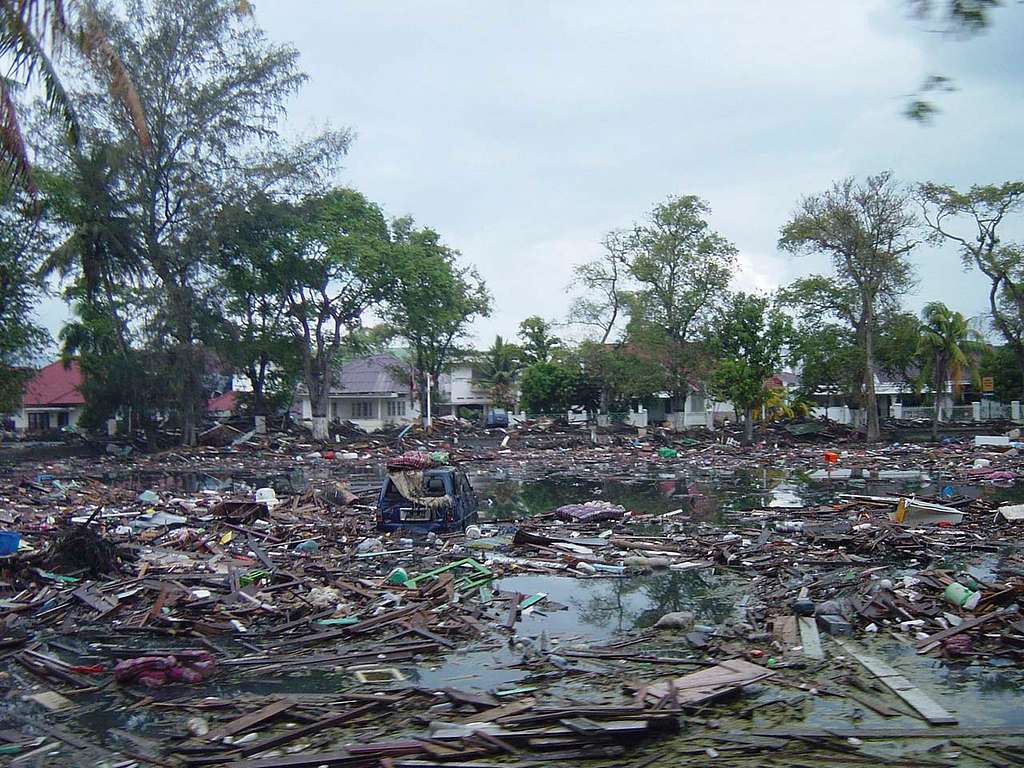A Tragic Natural Disaster and Its Impact on Aceh, Indonesia
The Aceh Tsunami 2004

The devastating Aceh tsunami of 2004 remains one of the deadliest natural disasters in modern history. Occurring on December 26, 2004, this massive undersea earthquake-generated tsunami struck the western coast of the Indonesian province of Aceh with unimaginable force, leaving in its wake a trail of destruction and loss. In this article, we will delve into the details of the Aceh tsunami, exploring its causes, the immediate aftermath, and the long-term impact it had on Aceh and its resilient people.
The Causes of the Aceh Tsunami
The Aceh tsunami originated from a powerful undersea earthquake measuring 9.1 to 9.3 on the Richter scale. The epicenter of the earthquake was located off the west coast of northern Sumatra, approximately 250 kilometers south of Aceh. The earthquake occurred as a result of the convergence of the Indian and Eurasian tectonic plates, where the Indian plate slid beneath the Eurasian plate, causing a massive rupture and displacement of the ocean floor. This displacement triggered a series of tsunamis that radiated across the Indian Ocean.
The Devastation and Immediate Aftermath
The impact of the Aceh tsunami was swift and catastrophic. Within minutes, towering walls of water, some reaching heights of 30 meters, surged inland, engulfing coastal communities and causing widespread destruction. The force of the tsunami obliterated entire villages, claiming the lives of an estimated 230,000 to 280,000 people, with Aceh being the hardest hit.
As news of the disaster spread, the international community rallied to provide aid and support. Humanitarian organizations, governments, and individuals from around the world mobilized resources and responded to the urgent needs of the affected population. The immediate relief efforts focused on search and rescue operations, providing medical aid, restoring infrastructure, and addressing the immediate needs of the survivors.
Rebuilding and Recovery
Following the initial rescue and relief efforts, the focus shifted to long-term recovery and rebuilding. The extent of the destruction was overwhelming, with entire communities decimated and crucial infrastructure, such as hospitals, schools, and roads, destroyed. The Indonesian government, along with international partners, launched extensive reconstruction and rehabilitation programs to help Aceh recover and rebuild.
Efforts were made to restore critical infrastructure, improve disaster preparedness, and revitalize the local economy. The rebuilding process also emphasized the importance of community engagement and participation, ensuring that the affected population had a voice in shaping the recovery efforts. NGOs and international organizations played a vital role in providing technical expertise, financial support, and guidance throughout the reconstruction phase.
Lessons Learned and Future Preparedness
The Aceh tsunami served as a harsh reminder of the devastating power of natural disasters and highlighted the need for improved disaster preparedness and early warning systems. In response to the tragedy, the Indonesian government, in collaboration with international partners, implemented various measures to enhance disaster resilience. These measures included the establishment of the Indian Ocean Tsunami Warning and Mitigation System and the construction of tsunami evacuation shelters along vulnerable coastal areas.
Furthermore, the disaster sparked global conversations about the importance of international cooperation and solidarity in responding to humanitarian crises. It prompted increased investments in disaster risk reduction and post-disaster recovery efforts worldwide, as well as the development of best practices and protocols for managing future disasters.
The Aceh tsunami of 2004 remains etched in our collective memory as a tragic event that reshaped the lives of thousands and tested the resilience of the Acehnese people. The disaster not only highlighted the importance of disaster preparedness and effective response mechanisms but also demonstrated the capacity for human compassion and solidarity. As Aceh continues to rebuild and recover, the lessons learned from this devastating event serve as a testament to the strength and determination of communities in the face of adversity.
About the Creator
Enjoyed the story? Support the Creator.
Subscribe for free to receive all their stories in your feed. You could also pledge your support or give them a one-off tip, letting them know you appreciate their work.





Comments
There are no comments for this story
Be the first to respond and start the conversation.